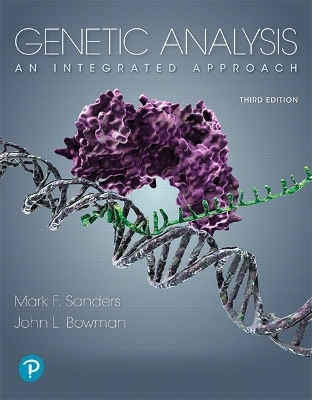
Glutamine Repeats and Neurodegenerative Diseases
Oxford University Press (Verlag)
978-0-19-850685-0 (ISBN)
- Titel ist leider vergriffen;
keine Neuauflage - Artikel merken
This book focuses on the discovery of a common genetic basis for a group of inherited neurological disorders including Huntington's Disease, spino-bulbar muscular atrophy and a series of hereditary ataxias. It now seems likely that these disorders are triggered by expanded trinucleotide repeats resulting in polyglutamine sequences in the specific proteins produced by the genes. This shared molecular background and other similarities, have led to the development of theoretical models for the pathogenesis of these diseases. It is now clear that the mechanisms involved are likely to be of more general relevance, outside of this particular group of disorders, with implications for other neurodegenerative processes such as those involved in Alzheimer's, Parkinson's and Prion diseases. The book starts with a review of the animal models of Huntington's Disease, before moving on to examine the issue of polyglutamine toxicity and the biochemistry of the Huntingtin protein.
The latter part of the book describes how these discoveries have brought a new unity to the molecular pathology of neurodegenerative diseases, and describes other disease groups thought to be related to the presence of proteins with expanded glutamine repeats. This book is an edited and updated compilation evolving from a Royal Society discussion meeting.
PREFACE; LIST OF CONTRIBUTORS; 1. Huntington's disease: a clinical, genetic and molecular model for polyglutamine repeat disorders; PART 1: ANIMAL MODELS OF HUNTINGTON'S DISEASE; 2. A transgenic mouse model of Huntington's disease; 3. From neuronal inclusions to neurodegeneration: neuropathological investigation of a transgenic mouse model of Huntington's disease; 4. Behavioural changes and selective neuronal loss in full-length transgenic mouse models for Huntington's disease; 5. Evidence for both the nucleus and cytoplasm as subcellular sites of pathogenesis in Huntington's disease in cell culture and in transgenic mice expressing mutant huntingtin; 6. A genetic model for human polyglutamine-repeat disease in Drosophila melanogaster; PART 2: POLYGLUTAMINE TOXICITY; 7. Polyglutamine pathogenesis, potential role of protein interactions, proteolytic processing and nuclear localization; 8. Properties of polyglutamine expansion in vitro and in a cellular model for Huntinton's disease; 9. Evidence for a recruitment and sequestration mechanism in Huntington's disease; PART 3: BIOCHEMISTRY OF HUNTINGTIN IN CELL CULTURES AND IN VITRO; 10. Aggregation of truncated GST-HD exon 1 fusion proteins containing normal range and expanded glutamine repeats; 11. The localization and interactions of huntingtin; 12. Analysis of the subcellular localization of huntingtin with a set of rabbit polyclonal antibodies in cultures mammalian cells of neuronal origin: comparison with the distribution of huntinton in Huntington's disease autopsy brain; 13. Are there multiple pathways in the pathogenesis of Huntington's disease?; PART 4: GENOMIC INFLUENCES ON CAG INSTABILITY; 14. CAG repeat instability, cryptic sequence variation and pathogenicity: evidence from different loci; 15. Microsatellite and trinucleotide repeat evolution: evidence for mutational bias and different rates of evolution in different lineages; PART 5: PATHOLOGY CAUSED BY OTHER PROTEINS WITH EXPANDED GLUTAMINE REPEATS; 16. Genotype-phenotype correlation in the spinocerebellar ataxias; 17. Insights from mice carrying X-linked CAG-polyglutamine atrophy; 18. Molecular pathology of dentatorubral-pallidoluysian atrophy; 19. Androgen receptor mutation in Kennedy's disease; 20. Progress in pathogenesis studies of spinocerebellar ataxia type 1; 21. Filamentous nerve cell inclusions in neurodegenerative diseases: tauopathies and -a-synucleinopathies; INDEX
| Erscheint lt. Verlag | 4.1.2001 |
|---|---|
| Co-Autor | Peter S. Harper |
| Zusatzinfo | 8 pp colour plates, numerous halftones and line figures |
| Verlagsort | Oxford |
| Sprache | englisch |
| Themenwelt | Medizin / Pharmazie ► Medizinische Fachgebiete ► Neurologie |
| Studium ► 2. Studienabschnitt (Klinik) ► Humangenetik | |
| Naturwissenschaften ► Biologie ► Biochemie | |
| ISBN-10 | 0-19-850685-6 / 0198506856 |
| ISBN-13 | 978-0-19-850685-0 / 9780198506850 |
| Zustand | Neuware |
| Haben Sie eine Frage zum Produkt? |
aus dem Bereich


